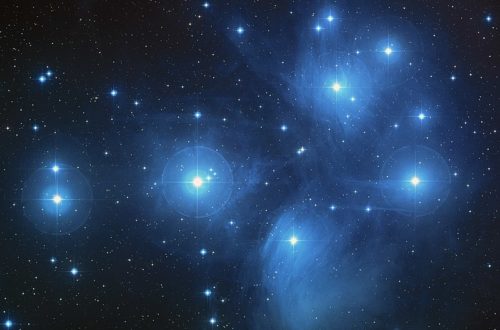Stargazing Calendar for March 2024
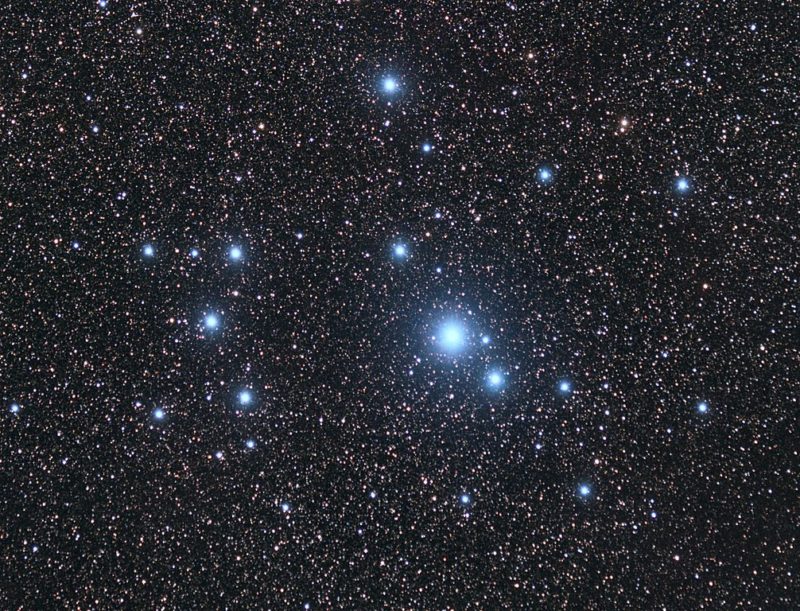
Looking for the March 2025 stargazing calendar?
Embark on a celestial journey while stargazing in March 2024. The astronomy calendar for this month promises a cosmic dance of stars, planets, and asteroids, offering a tapestry of celestial wonders. Join us in exploring the mysteries and marvels that the night sky has in store for you this March. Get ready for a month of unforgettable stargazing experiences!
Would you like to be notified of stargazing events?
List of Meteor Showers in March 2024
- Antihelion Source: Start on December 10; multiple peaks; end September 10.
- γ-Normids: Start on February 25; peak on March 14; end on March 28.
We also have a complete list of meteor showers for the entire year here.
List of Planetary Conjunctions in March 2024
- Conjunction of the Moon and Mars in Capricornus on March 8.
- Conjunction of the Moon and Venus in Capricornus on March 8.
- Conjunction of the Moon and Jupiter in Aries on March 13.
- Conjunction of Venus and Saturn in Aquarius on March 21.
March 2: Theta Carinae Cluster at its highest point in the sky
The Theta Carinae Cluster (also known as the Southern Pleiades, IC 2602, or Caldwell 102) is an open cluster in the constellation of Carina. (See featured image at the top of this article.) It was discovered by French astronomer Abbé Nicolas-Louis de Lacaille in 1751, who noted the cluster’s resemblance to the Pleiades, which led to it being nicknamed as such.
The cluster will reach its highest point in the sky at around midnight local time. It will reach apparent magnitude 1.9, which means it will be visible to the naked eye, though a pair of binoculars or a small telescope is recommended for optimal viewing. The Moon will be a 22 days old waning crescent at 49%.
Keep in mind that this cluster is not visible to those of us in the Northern Hemisphere, as Carina is a southern constellation.
The Theta Carinae Cluster contains about 75 stars and has an apparent diameter of about 50 arcminutes. It is the third-brightest open cluster in the sky, after the Hyades and the Pleiades. This is because it is relatively close to us at 486 light years away.
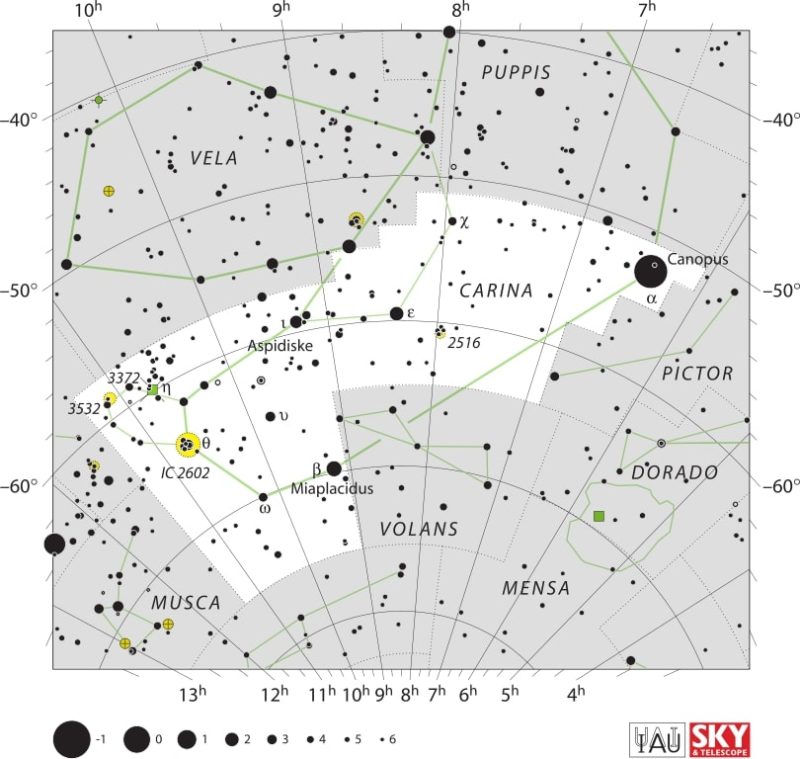
March 3: Asteroid 3 Juno at opposition
Asteroid 3 Juno will reach opposition, when it lies opposite to the Sun in the sky. It will reach the highest point in the sky around midnight local time.
On this occasion, the asteroid Juno will pass within 1.687 AU of Earth and reach a peak brightness of apparent magnitude 8.6. Unfortunately even at the peak, this asteroid will be too faint to observe with the naked eye. You will need at least a 4 inch telescope, which you should point towards the constellation of Leo. The Moon will be a 23 days old waning crescent at 42%.
Juno is one of the largest asteroids of the main belt at mean diameter of 246.596 km. It orbits the Sun at a semi-major axis of 2.669 AU. (Source: NASA JPL Small-Body Database Lookup for 3 Juno.)
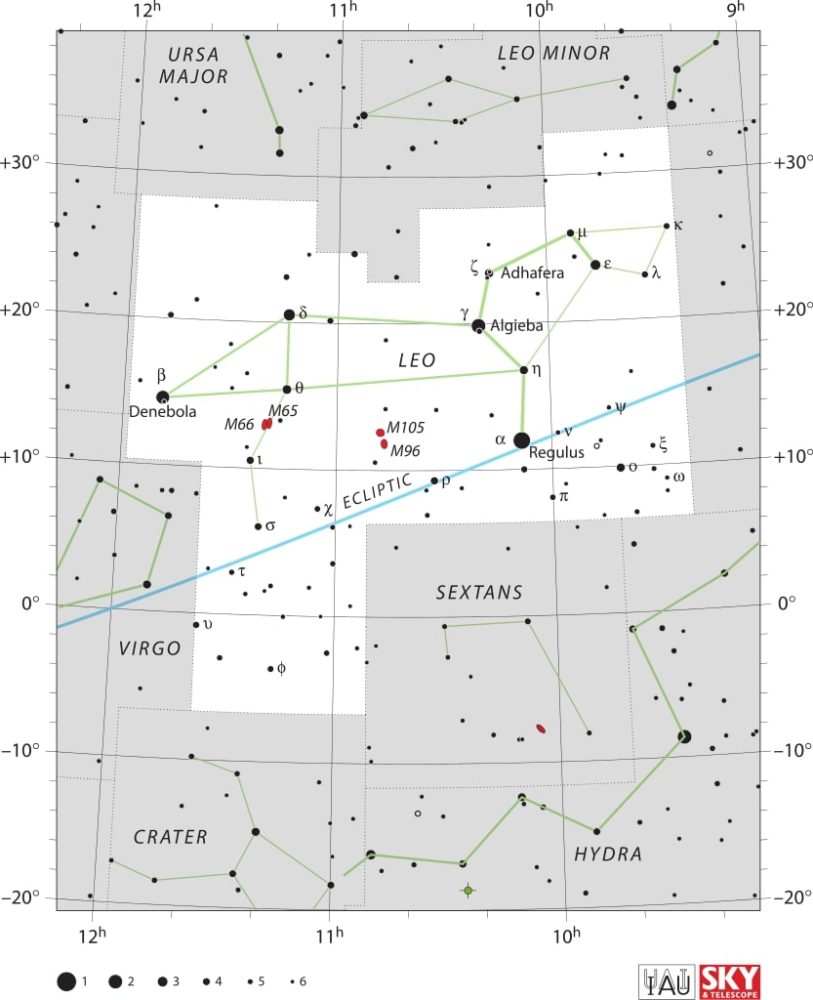
March 8: Conjunction of the Moon and Mars
The Moon and Mars will be at conjunction by sharing the same right ascension and passing within 3°31′ of each other.
Look for the two bodies in the constellation of Capricornus. The Moon will be a very thin waning crescent (4%) at 28 days old, very close to new moon. Despite this, the Moon will still be at apparent magnitude of -9.9, while Mars will be at magnitude 1.2.
Venus will also be nearby preparing for its own conjunction with the Moon a mere 12 hours later.

March 8: Conjunction of the Moon and Venus
The Moon and Venus will reach conjunction passing within 3°16′ of each other while sharing the same right ascension.
The Moon will be at apparent magnitude -9.4 and Venus at magnitude -3.9 both in the constellation of Capricornus. By then, the Moon would have faded to a mere 2% of its size – a 28 days old waning crescent – and will not interfere with stargazing this early to middle March 2024.
Mars is still lingering nearby after its own conjunction with the moon 12 hours earlier.
March 8: Wishing Well cluster at its highest point in the sky
The Wishing Well Cluster (also known as NGC 3532 or Caldwell 91) is an open cluster 1,321 light years away in the constellation of Carina. (Constellation map already displayed above, when discussing the Theta Carinae Cluster.) It was discovered by Abbé Nicolas-Louis de Lacaille in 1752, like many other objects in the southern sky.
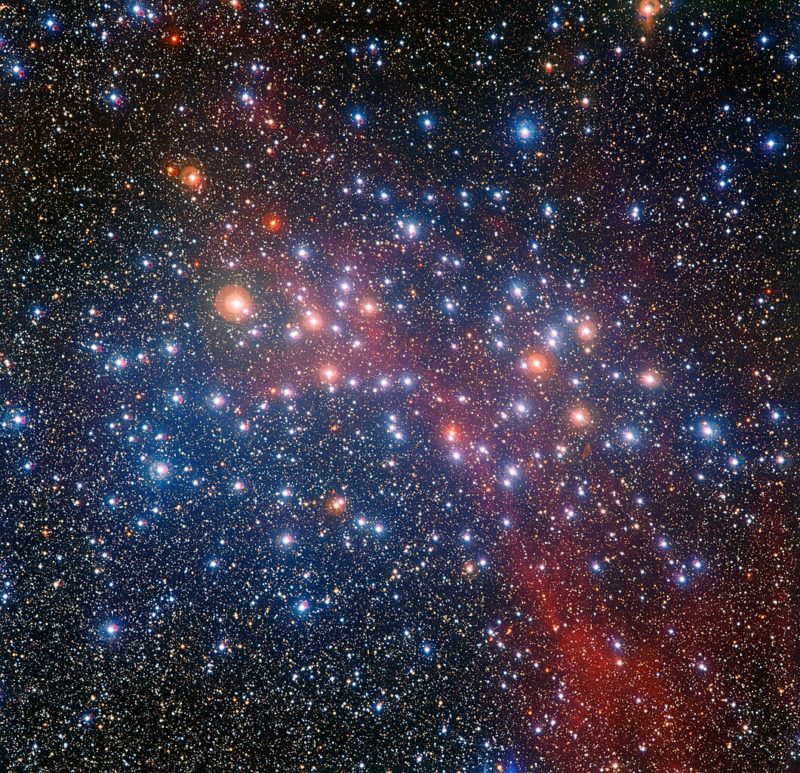
The cluster will reach its highest point in the sky at around midnight local time. It will reach apparent magnitude 3.0, so a pair of binoculars or a small telescope is recommended for optimal viewing. The Moon will be a 28 days old waning crescent that has faded below 1% of its size. Despite having no lunar interference, most of us will miss out on this sight as Carina is a southern constellation and thus not visible in the Northern Hemisphere.
March 12: Asteroid 23 Thalia at opposition
Asteroid 23 Thalia will reach opposition, when it lies opposite to the Sun in the sky. At approximately midnight local time, it will reach its highest peak in the sky.
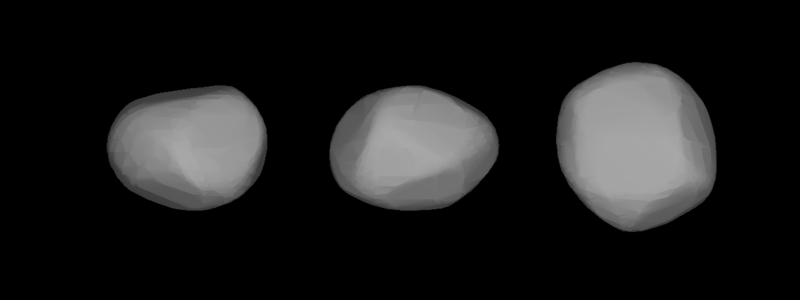
At that time, the asteroid Thalia will pass within 1.163 AU of Earth reaching a peak brightness of apparent magnitude 9.7. Unfortunately even at the peak, this asteroid will be too faint to observe with the naked eye. You will need at least a 4 inch telescope, which you should point towards the constellation of Leo. (Constellation map already displayed above, when discussing the asteroid Juno.)
The Moon will not interfere with stargazing as it will be a very thin waxing crescent only 2 days old at a mere 7%.
Asteroid 23 Thalia is a large S-type main-belt asteroid with a mean diameter of 107.53 km and a semi-major axis of 2.627 AU. (Source: NASA JPL Small-Body Database Lookup for 23 Thalia.)
March 13: Conjunction of the Moon and Jupiter
The Moon and Jupiter will be at conjunction by sharing the same right ascension and passing within 3°35′ of each other.
At around the same time the two bodies will also make a close approach (appulse) reaching 3°19′ from each other, but not sharing the same right ascension.
The two celestial bodies will meet in the constellation of Aries with the Moon at apparent magnitude of -10.9 and Jupiter at -2.1. The Moon will be a 3 days old waxing crescent at 23%.

March 14: γ-Normid meteor shower peak
The Gamma Normids will be the only meteor shower to peak this March 2024 with a zenithal hourly rate of 6 meteors if conditions are optimal. Those conditions could be very close to optimal as the Moon will be a 4 days old waxing crescent at 28%.
Some meteors may also be spotted between February 25 and March 28. They will radiate from the constellation of Norma (more precisely from a point near the star Gamma2 Normae) at the speed of 56 km/s on average. As Norma is a constellation of the southern sky, most meteors will be visible only in the Southern Hemisphere. However, with any luck, some could perhaps still be observed in more northern latitudes.

March 14: Close approach of the Moon and the Pleiades
The Moon and the Pleiades (also known as M45 or Messier 45) will make a close approach, passing within only 21.2 arcminutes of each other.
Both objects will be in the constellation of Taurus with the Moon being at apparent magnitude -11.4; and the Pleiades at 1.3. The Moon will be a 4 days old waxing crescent at 34%.

March 20: March equinox
At 03:07 UTC, we will have the March equinox, meaning the first day of spring for us here in the Northern Hemisphere or fall in the Southern Hemisphere. On this day, everywhere on Earth will have almost exactly 12 hours of day and 12 hours of night.
March 21: Conjunction of Venus and Saturn
Venus and Saturn will be at conjunction by sharing the same right ascension and passing within 20′ of each other.
At around the same time the two bodies will also make a close approach (appulse) reaching 19.3 arcminutes from each other, but not sharing the same right ascension.
The two planets will meet in the constellation of Aquarius with an apparent magnitude of -3.9 for Venus and 1.0 for Saturn. The Moon will be 11 days old waxing gibbous at 93%.

March 24: Mercury at greatest eastern elongation
Mercury will be at its highest point above the horizon in the morning sky, making it the best time to view the planet. Look for it low in the western sky just before sunrise. It will be at apparent magnitude -0.3 in the constellation of Pisces.
The Moon will unfortunately interfere with stargazing for most of the remaining month of March 2024. During Mercury’s greatest eastern elongation it will be only one day away from a full moon, waxing gibbous at 99%.

March 25: Penumbral lunar eclipse
When the Moon passes through the penumbra, or partial shadow, of the Earth, it is known as a penumbral lunar eclipse. The Moon will somewhat but not entirely darken during this kind of eclipse. The eclipse will be visible throughout all of the Americas. Look in the constellation of Virgo.
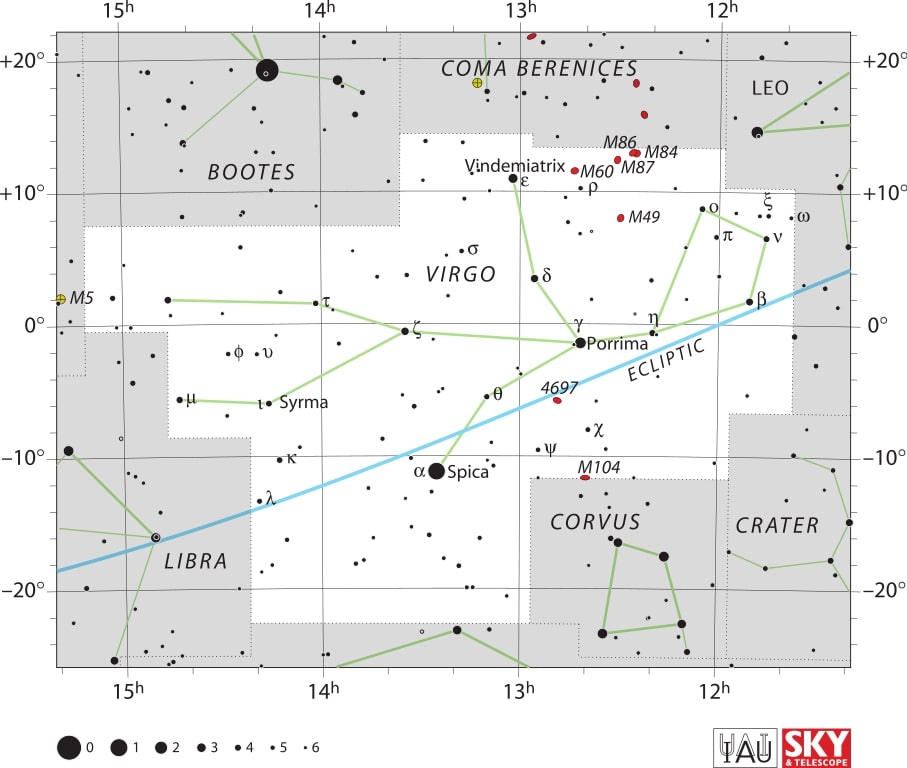
For more information see the chart below from NASA’s eclipses website:
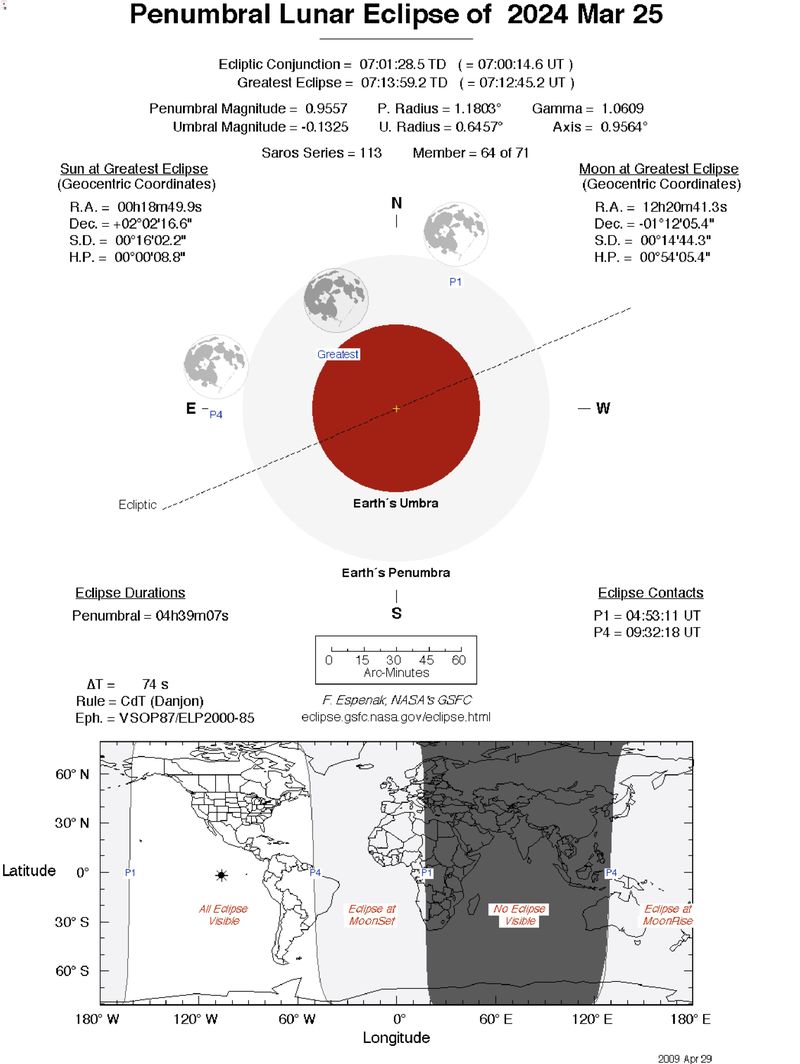
March 30: Makemake at opposition
At about midnight local time, the dwarf planet Makemake (minor-planet designation of 136472 Makemake) will reach the highest point in the sky and be opposite of the Sun. Look in the constellation of Coma Berenices with a 4 inch telescope at least, as it will have an apparent magnitude of 17.1. At around the same time Makemake will also reach its closest point to the Earth (perigee) at a distance of 51.77 AU.
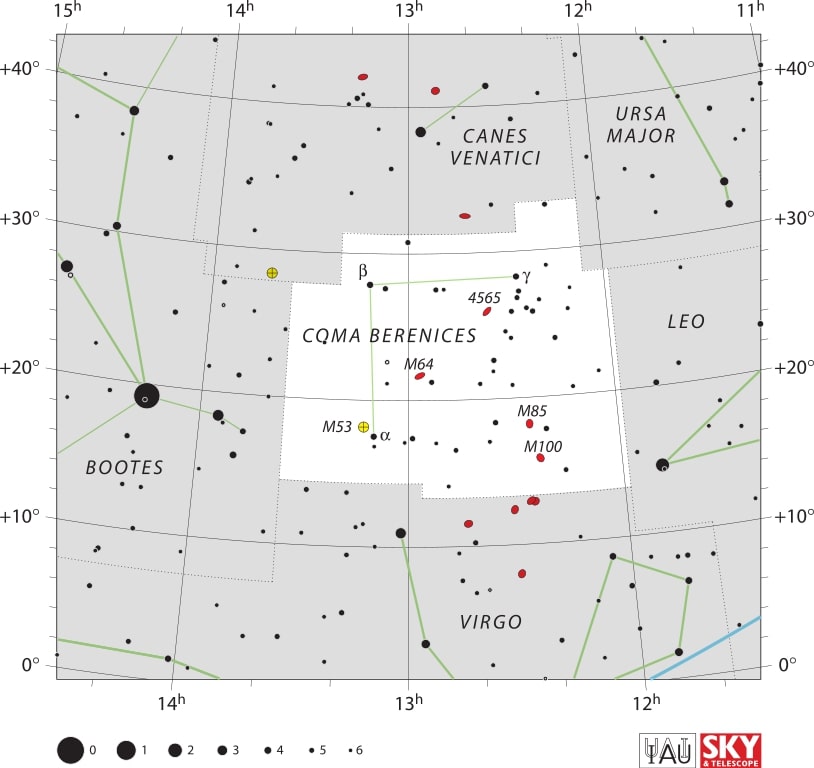
Makemake is one of the largest objects in the Kuiper belt and the second brightest trans-Neptunian object after Pluto. It has a diameter of 14020 km, which is about 60% that of Pluto. The dwarf planet was named after Makemake, the creator of humanity, the god of fertility and the chief god in the Polynesian Rapa Nui mythology of Easter Island.
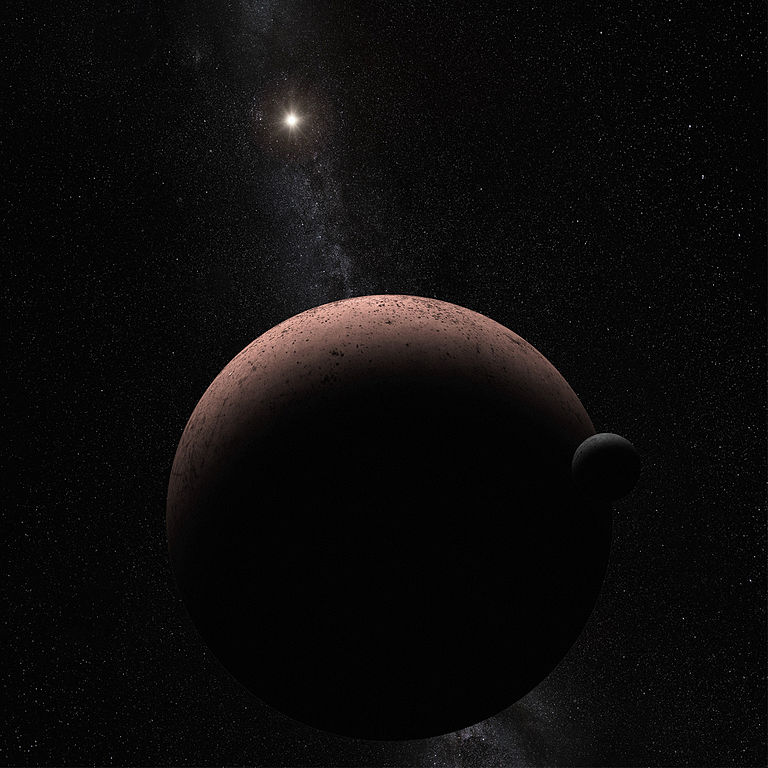
Moon Phases in March 2024
As you know, the Moon has a big impact on the visibility of celestial bodies and astronomical events in the night sky. So here’s a calendar of the phases of Moon for this month of March 2024:
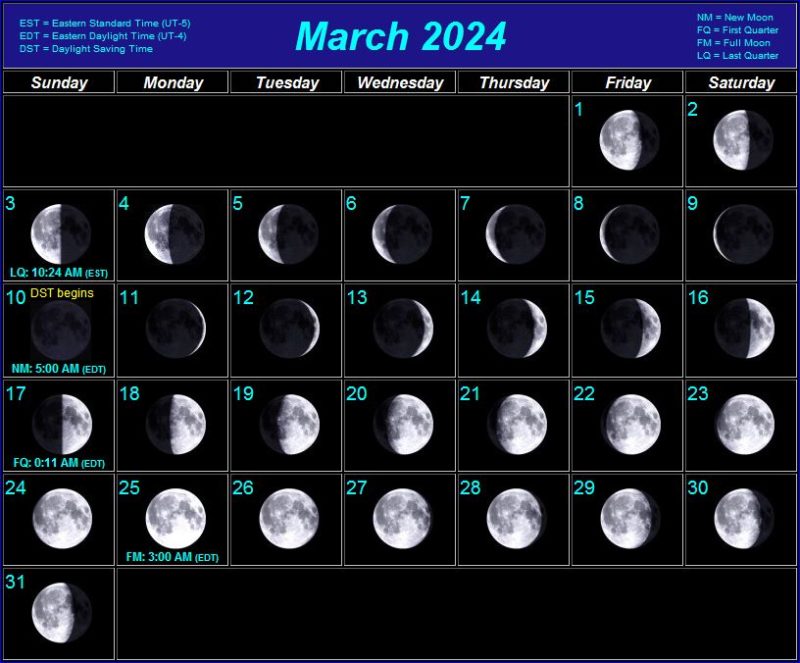
Positions of the Planets in March 2024
Mercury: The closest planet to the Sun can be seen at dawn and dusk travelling across the constellation of Aquarius and then Pisces later in the month. This planet, being the closest to the Sun, will appear to move quickly in the night sky and its position will change in the following weeks.
Venus: The sister planet can be seen travelling across the constellation of Capricornus and then Aquarius. Just like Mercury, Venus can only be seen at dawn and dusk.
Mars: The red planet can be seen in the constellation of Capricornus.
Jupiter: The gas giant is visible in the constellation of Aries. Jupiter can easily be spotted with the naked eye, even in highly illuminated cities.
Saturn: The ringed giant can be seen with the naked eye in the constellation of Aquarius.
Uranus: The ice giant can be seen in the constellation of Aries with the use of a telescope.
Neptune: The blue giant requires a telescope pointed in the constellation of Pisces in order to be seen.
Positions of Dwarf Planets and Large Asteroids in March 2024
Ceres: The asteroid belt’s lone dwarf planet can be seen in the constellation of Sagittarius with the help of a telescope.
Vesta: This large asteroid can be seen in the constellation of Taurus with a telescope.
Pallas: The asteroid can be observed with a telescope in the constellation of Hercules.
Pluto: This distant dwarf planet can be found in the constellation of Capricornus with the help of a large telescope.
Major astronomical events next month – April 2024
- April 8: Asteroid 532 Herculina at opposition.
- April 8: Total solar eclipse.
- April 21: Haumea at opposition.
- April 21: Comet 12P/Pons-Brooks at perihelion.
- April 22: Lyrid meteor shower peak.
- April 23: π-Puppid meteor shower peak.
Conclusion
In conclusion, March 2024 presents a plethora of celestial events for stargazing enthusiasts to behold. From the penumbral lunar eclipse to asteroid oppositions and planetary conjunctions, there’s something for every astronomy enthusiast.
So, mark your calendars and don’t forget to subscribe to our newsletter below to receive our stargazing calendar in your mailbox. Happy stargazing!
Sources:
- Planetary ephemerides produced by NASA’s Jet Propulsion Laboratory (JPL)
- International Meteor Organization
- NASA JPL Small-Body Database Lookup
- NASA Goddard Space Flight Center Eclipse Web Site
See also:
- Previous month’s calendar: Stargazing Calendar for February 2024
- Next month’s calendar: Stargazing Calendar for April 2024
Would you like to receive similar articles by email?




